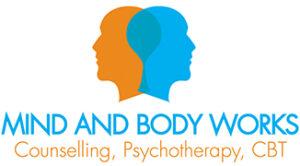I have always been fascinated with the root of the practice of EMDR (Eye Movement Desensitization Reprocessing). Helping patients reprocess trauma with the use of bilateral stimulation with the purpose of desensitizing the upsetting memory. I have been trained in CBT, Hypnosis, Body Centered Psychotherapy, and others. My training in the latter would utilize breathing with cross lateral movements of our arms and legs to generate some energy while we processed some intense memories.
Essentially this is what happened to Francine Shapiro, the founder and guru of EMDR back in 1987. She was walking through the park one day with some disturbing memories encompassing her. She then was able to notice that while moving her eyes back and forth the negative feelings and thoughts subsided. This discovery led her to the development of an effective evidenced based therapy that uses the brain, stimulated by bilateral touch, visual, or auditory impact to bring relief to one’s nervous system while targeting disturbing memories.
Other forms of therapy like art therapy creates a bilateral stimulation where you have both the left and right side of the brain working at the same time. Our right side functions among other things with the creative and emotional thinking part of the brain while the left side acts as the rational and critical thinking part of the brain. This cross stimulation has a way of naturally dancing with each other to help us function different components of our bodies. And in the case of psychology, using a physiological approach to moving the disturbed emotions that can have a way of getting stuck in our nervous systems.
Dual action stimulus used in EMDR is simply using a distraction technique within yourself. Often, people seek external distractions with the hope that it soothes our troubles or for emotional respite. Yet this method with the proper therapeutic containment allows the client to face the perceived threats from the past. By doing so the client is able to effectively integrate the stress to be distributed in a way through your nervous system that generates balance of a more positive mind set. And allowing your senses to be in a more present state. It’s quite beautiful, actually, getting to that place.
Also known as Bilateral stimulation, DAS is considered mostly safe to generate stress relief. However, in certain cases with complex trauma or those with dissociative identity dispositions, or migraines it’s important to utilize an EMDR therapist to assure it’s done in an appropriately measured way avoiding triggering hypersensitivity to changed stimuli.
Bilateral stimulation reduces the physical arousal of stress, helps people get out thinking patterns that might be “stuck” or “contracted” leading to increased negative cognitions. This helps your thoughts move further away from the upsetting memories and more importantly making them less impacting. Once successfully reprocessed, the outcome lends itself to the reduction of anxiety. And that’s good news when our nervous systems are tormented sometimes for years regarding invisible threats.
I remember once my daughter when she was around 7 years old and prompting her to identify what zone she was in emotionally by using colors to help her brain identify the feeling state she was in. I could see her momentarily process this request and seemingly deescalate from a potential over aroused state that could have led her to a meltdown or tantrum. That stimulation from the right hemisphere of the brain to the more critically thinking left side can be freeing in any given moment. For my daughter who was born with a very over reactive brain, this can be hit or miss but if prompted in a preemptive way in her case, the experience can be empowering for her and the parent for that matter.
Recently, I was using CBT with a teenager who experienced depression that stemmed from some previous school bullying. My client was able to apply the cognitive restructuring practice to the scenario and within 6 sessions seemed to reprocess the experience to drastically reduce his depressive symptoms. His previous overstimulation of the traumatic memories to the realization that (moving to the left hemisphere) that he was not source of the bullying and that it was all about the perpetrator. This freed himself of being held hostage by the victimizing experiences from the past and more receptive to his new school and great group of friends that he had recreated for himself. Now he could feel empowered to truly embrace this reality.
Once I worked with a young adult using a few techniques comprising of some hypnosis, mindfulness exercises to help reprocess some past sexual abuse. The client was able to move his emotions and memories past certain stuck points becoming clearer regarding his victimization desensitizing his nervous system. This led him to speak about his experience to a group of peers giving public testimony regarding his wound and that it’s possible with the right steps to recover from it. Again, how empowering it is to go from being stuck as a victim to shifting the attention to a place of thriving.
All these examples illustrate how the brain can naturally have a healing effect sometimes with the help of a professional. These examples utilized various ideas and techniques but generated a shift in thinking, emotion, and body sensations leading people to generate a pathway to feel empowered. Whatever the approach is to illicit this brain balancing act, we know more than ever the vast potential it has for integrating our experiences with helpful outcomes.

